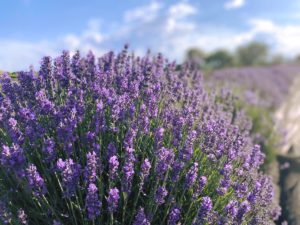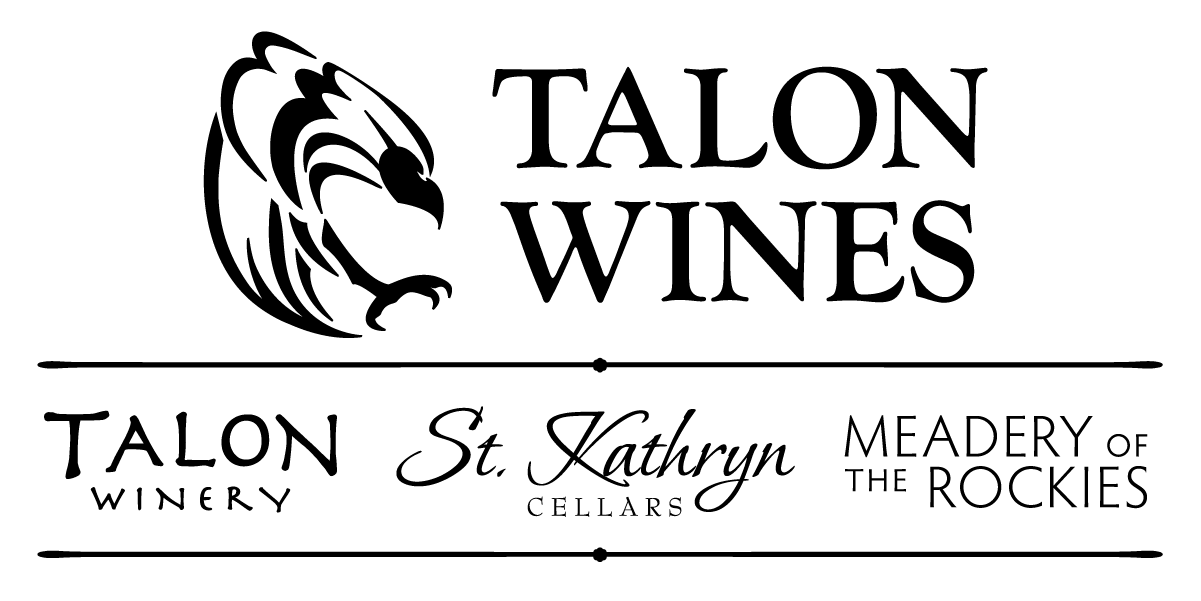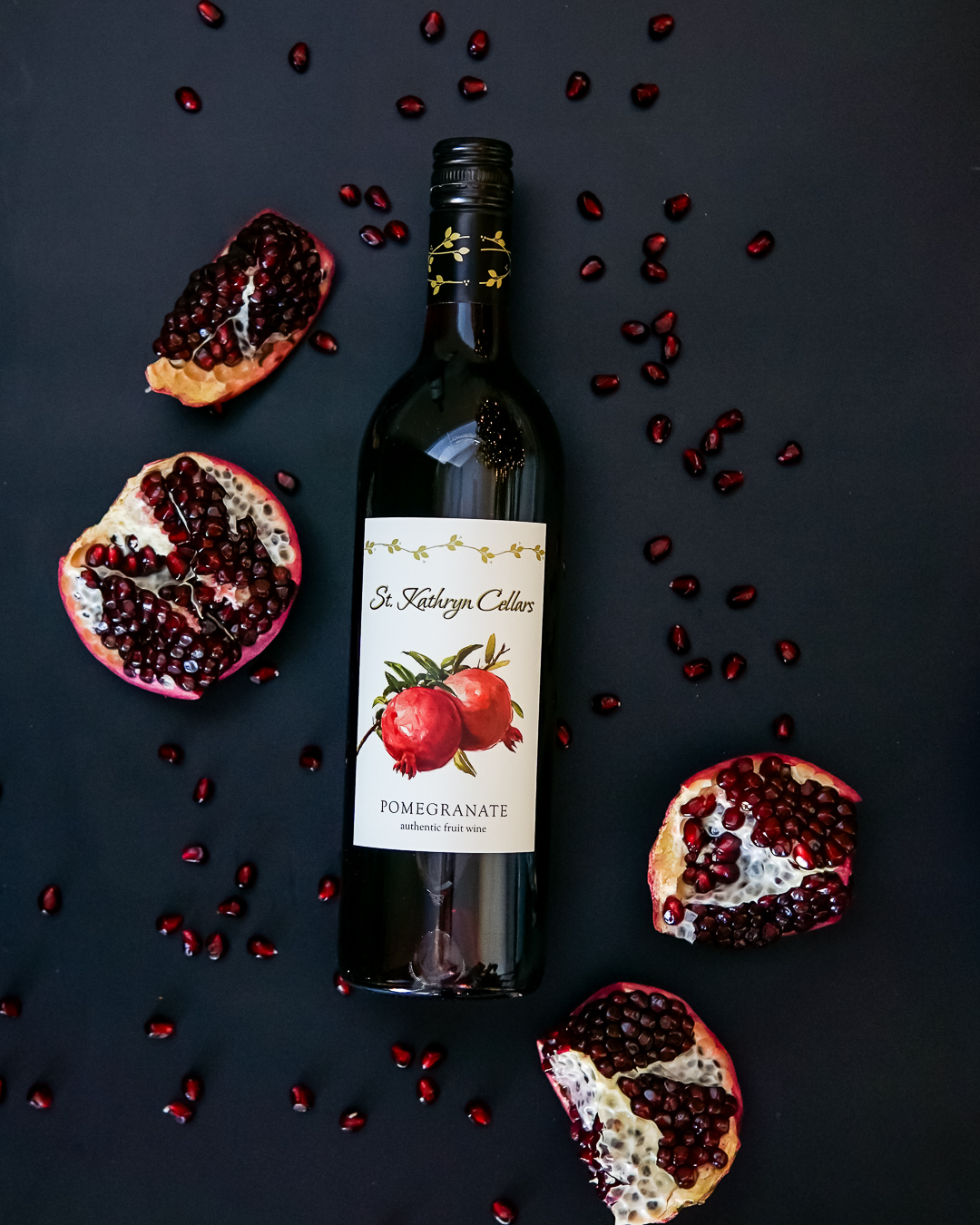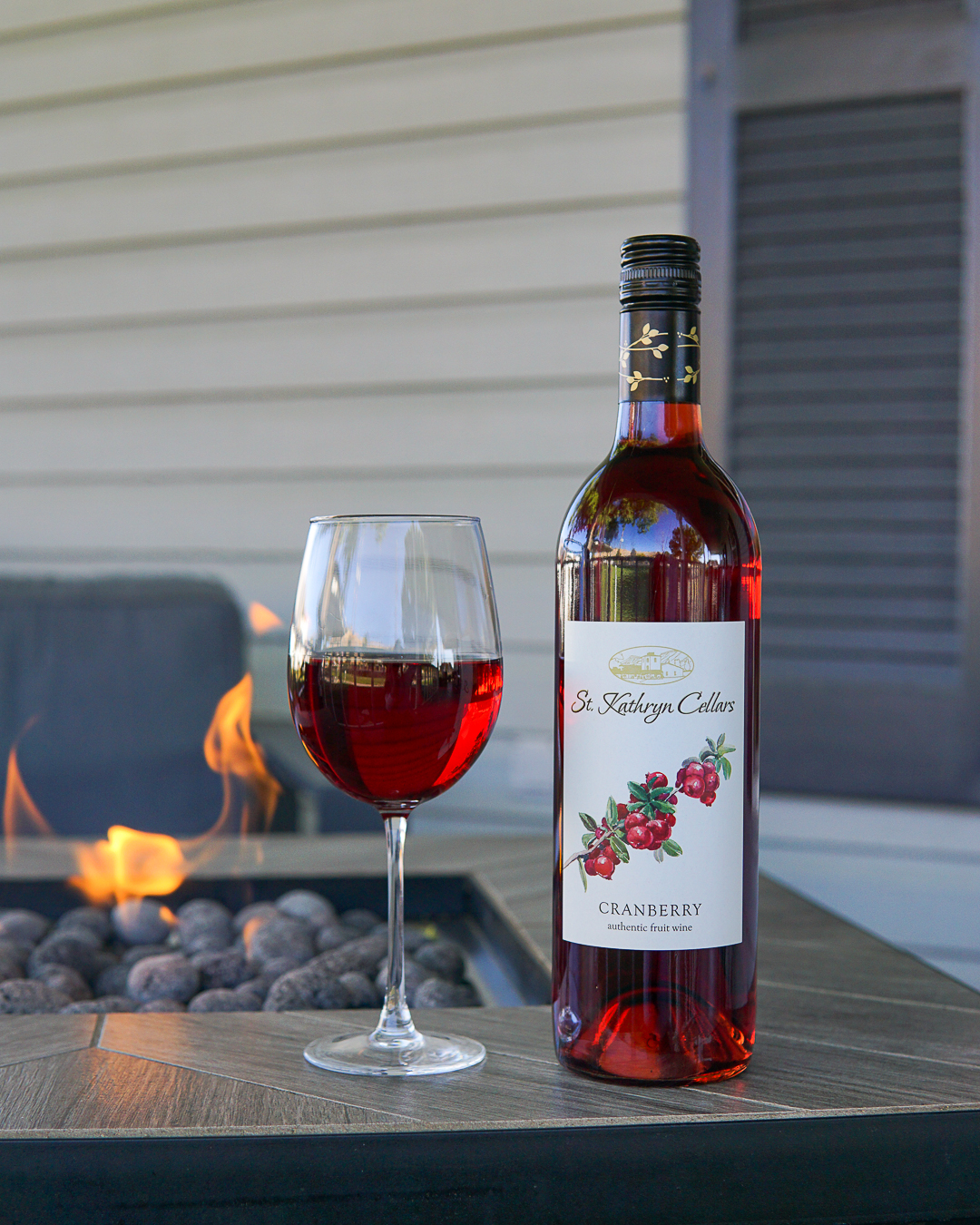St. Kathryn Cellars Lavender Wine

St. Kathryn Cellars Lavender Wine has become one of our most popular, top-selling wines. Ever. It’s delicious. People love it. It’s been a favorite of our customers for more than six years. In fact, the wine has sold consistently enough that we’re now bottling it twice per year – the only wine we bottle twice per year.
Just read the reviews above to get an idea of how special it is. But! One of the most interesting things about the wine is how it came about – because we never intended to set out and create the world’s best lavender wine. Of course, we’re grateful now that the idea was presented to us. But the story of our lavender wine is really more of a group effort than just us, alone.
Palisade, Colorado Is Known For Growing Lavender
St. Kathryn Cellars is located in Palisade, CO. We’re located just on the Western Slope of the Rocky Mountains, at the confluence of the Colorado River and Gunnison River – an area that has surprisingly fertile soil. Our area is known for “Palisade peaches,” which people literally travel our way to pick up, by the box or barrel. Certain kinds of grapes grow exceedingly well here, such as Riesling, which we’ll be talking more about soon. And lavender. We’re not as famous for lavender as we are for other things, but each year, we do have a Lavender Festival that draws in most of the valley. And the lavender, we’ve found over time, makes for great wine.
How Our Lavender Wine Came To Be
Our head winemaker was approached years ago by a local lavender farm. They had the idea to make lavender-infused wine, and wanted to find a local winery who would take on the challenge. Initially, truth be told, we weren’t sold on the idea. Most people, even today, when they first hear about our lavender wine, think the idea of it sounds odd. This was right about the time Talon’s current owner, Glenn, took over. But the lavender farm was persistent, and they pursued their idea with a couple other Palisade wineries. They then came back to us at St. Kathryn Cellars, and told us that they’d found someone who was willing to give it a try. But they believed that with our setup, that we could do a better job, and asked us to reconsider a trial run. In the end, we decided to do our best making what we thought must’ve been one of the world’s first lavender wines, on large scale.
For our first batch, we used Cameo Rose as our base, in part because we had a decent stock at the time. It also seemed like it could be a good pairing for the lavender infusion. There were a lot of trials with that first batch, and some fine tuning involved through each step of the process. But we made enough bottles of our new lavender wine to last for a year. Or so we thought.
Within four or five months our whole stock sold out. We were more than surprised at our customers’ enthusiastic response to our new, adventurous wine. And we decided that lavender held an opportunity for us and our community that we couldn’t pass up.

Today’s Lavender Wine By St. Kathryn Cellars
Today’s St. Kathryn Cellars Lavender wine is made using Riesling grapes from Talbott Farms, here in Palisade. Riesling grapes grows well in Colorado’s Western Slope, which can sometimes have unexpected late-season frosts, and wildly varying temperatures. But with Riesling, we can almost always get a good crop that’s flavorful, aromatic, and that complements lavender, nicely. We also love working with local farmers for our grapes. It gives us a chance to be more involved in the community, and support local businesses and families here. Plus, the Talbotts are sixth generation farmers. They know as much or more than anyone about farming, they have grape-growing figured out, and produce a great crop for our winemaking each year.
Our Riesling wine alone is a fantastic wine (you can check our Riesling wine here). We’ve won two gold medals with our Riesling at wine competitions. We use the exact same Riesling as the base for our lavender wine, so you can know that we are not skimping on quality. Just because we’ve added a fun, lavender flavor to the wine, doesn’t change our commitment to bringing our customers the best. Which is, of course, part of why our lavender wine is so good.
The Process Of Making Lavender Wine
We begin our lavender wine making process with the Riesling base. We then add organic Buena Vista lavender from our local producer, Sage Creations. A food processor grinds up the lavender, and we then seep it like a tea, in the wine. Grinding the lavender, we’ve found, helps release the lavender’s oils from the flower. As the lavender seeps into the Riesling wine, it extracts the flavor, and produces more flavorful aromatics. After the wine sits for a couple weeks, we continually smell and taste the product each day, until we’re satisfied that we’ve reached the proper balance. It’s important to us that we get the lavender flavor we’re looking for, without getting too much on the herbaceous or soapy side.
Pairing Foods With Our Lavender Wine
Our St. Kathryn Cellars Lavender wine is a sweet wine. It pairs well with salty cheese, and charcuterie trays. One dish you may also try is pairing it with yellow squash and pumpkin soup, which may sound odd, but works very well. We’ve also had good experiences when pairing our lavender wine with fish cooked with lemon. Overall, this wine can go well with a lot of foods. And, one of the most important things we like to tell people, is this: drink what you like. Don’t worry too much about occasion, food pairings, or what’s “proper.” Wine all comes down to what you enjoy, and if you’re sharing, what your guests enjoy.
Lavender Drink Mixes
If you want to see a couple great drink mixes that use our lavender wine, we have recipes for our “Lavosa” (Lavender Mimosa) and Lavender Spa Water on our website. You can also make a great drink by combining a glass of our lavender with lemon bubbly water. It makes for a very refreshing summer drink.




